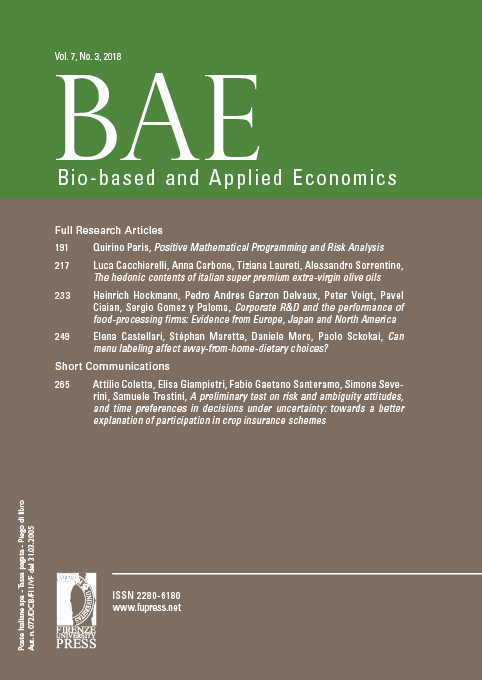Published 2019-12-18
Keywords
- Risk analysis,
- positive mathematical programming,
- model calibration,
- chance constraint,
- policy analysis
How to Cite
Abstract
In 1956, Freund introduced the analysis of agricultural price risk in a mathematical programming framework. His discussion admitted only constant absolute risk aversion. This paper generalizes the treatment of risk preference in a mathematical programming approach along the lines suggested by Meyer (1987) who demonstrated the equivalence of expected utility of wealth and a function of mean and standard deviation of wealth for a wide class of probability distributions that differ only by location and scale. This paper extends the definition of calibration under Positive Mathematical Programming (PMP) by considering limiting input prices along with the traditional decision variables. Furthermore, it shows how to formulate an analytical specification for the estimation of the risk preference parameters and calibrates the model to the base data within small deviations. The PMP approach under generalized risk allows also the estimation of output supply elasticities and the response analysis of decoupled farm subsidies that recently has interested policy makers. The approach is applied to a sample of farms that do not produce all the sample commodities.






